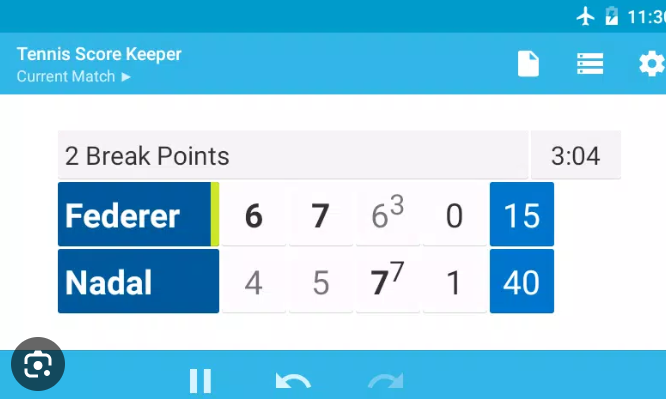Understanding The Scoring System In Tennis
Whether you’re watching the great players or playing yourself, tennis is one of the most exciting sports to watch. It’s also relatively easy to get started, with many clubs open to players of all levels and offering a ladder system.
But the scoring in tennis can seem strange to people who are not familiar with the game. Unlike most other sports, every point has a different value.
Origins
The scoring system in tennis results can seem strange to those unfamiliar with the game, but once you understand it, it will become second nature. Most racquet sports use a standard method of scoring points, but in tennis, there is no set number of points awarded for each rally. In fact, a point is awarded only when one player wins it. This gives the game a unique character that sets it apart from other sports.
The origin of the tennis scoring system is unclear, but many theories exist. One theory suggests that it originated from clock faces, which used the hand position at the 15, 30, and 45 minute marks to keep score. This led to the score becoming 15-30-40. However, the 45-minute mark didn’t work with deuce and advantage, so it was changed to 40 after 30 to allow for a tie.
When a match is tied at 40-40, both players must win two points to break the tie. The player who was serving will add a point to their game score and the player receiving will subtract a point. If no one can win two points, the game continues in a round called deuce. This process is repeated until one player gains a two-point margin, which wins the game. This type of scoring is also used in basketball.
Rules
If you’re new to tennis, it can be a bit confusing trying to understand the rules and scoring system. But if you take the time to learn the basics, you can enjoy the game more and have a better understanding of what’s happening. The first thing to understand is how points are scored in tennis. The scoreboard shows one column for the set score, and another for the point score. You’ll also see the players’ names and scores listed underneath each.
In a set, the first player to win six games is declared the winner of the match. Unlike other sports, a set in tennis can have several score outcomes, including 6-4 or 6-1. Depending on the match’s format, a tiebreak can be played to determine the winner of a set.
The next important rule is that players cannot touch the ball while a point is being played. If they touch the net or other materials, they will lose the point. In addition, players can only use their rackets to hit the ball. If they hit the ball with other parts of their body or with their hands, they will lose the point. Also, they can’t serve out of bounds or behind the baseline. This rule helps make the game faster and more fun.
Scoring System
Whether you’re playing tennis or watching a match, understanding the scoring system can be tricky. There are different rules for games, sets and matches, which can be confusing to new players. However, the process is fairly simple once you understand the basics. In this article, we’ll talk specifically about the game point and advantage rules.
In order to win a point in tennis, you must hit a ball over the net and inside your opponent’s service box. This is called a winner, and it’s one of the five ways to score a point in tennis. You can also lose a point by missing a serve at the net or outside the service box. You can also lose a point by double faulting, which occurs when you miss two consecutive serves.
Another important aspect of the game is determining who wins a set. Generally, the first player to win six games wins the set. However, if the set is tied at 6-6, a tiebreak will be played. This is a special type of game that uses a different counting system, but the first player to establish a 2-point advantage wins the set. This format is currently only used at a few tournaments throughout the year.
Tie-Breaks
Tie-breaks in tennis are a special game that allows players to decide a set that has been tied at six games each. The first player to win a tie-break by two points wins the set. The game is very intense and requires a high level of concentration. It is also very important to stay in the present moment and not overthink the situation, as it can be easy for points to slip away.
The tie-break was introduced into tennis after a marathon 1969 match between Pancho Gonzales and Charlie Pasarell. The match lasted more than five hours and spanned two days, with both players claiming seven match points in the final set. The tie-break was designed to give tennis a definitive “finish line,” so that matches could be wrapped up in the final set rather than dragging on for days.
When a tie-break begins, the same rotation of serves continues as it did in the regular sets. The first point is served by the team that was serving on the deuce court in the previous game. The other team then serves the next point starting from their ad court. This pattern is repeated until one side reaches 10 points.
Some players are able to sustain an excellent record in tie-breaks over the course of a season. This can be due to superlative serving, daring return tactics, or mental strength. However, it is important to remember that a good record in tie-breaks is not necessarily a sign of great overall tennis skill. In fact, luck plays a major role in winning or losing a tiebreak.
Professional Leagues
The scoring system in tennis is slightly different from the point score in other sports, but it’s easy to learn. Each player takes turns serving for a game, and each time they win a game, their score increases by one. In most sets, the player with the highest game score is declared the winner. However, there are some tournaments where competitors compete for the best 2 out of 3 sets to determine a winner. In such cases, the players’ game scores are summed up for each set to decide the final result. Playing tennis is a great way to replenish your attention, and it can be used to improve skills in careers that require alertness. It can also boost your self-esteem, making it easier to carry on with tasks that may seem hard.
Conclusion:
The tennis results showcase a highly competitive and exhilarating event, where players displayed exceptional skill and determination. Spectators witnessed intense matches, surprising upsets, and remarkable comebacks, making it a memorable tournament. The outcomes highlight the sport’s unpredictability and the continuous growth of young talents, promising an exciting future for tennis enthusiasts worldwide.
FAQs:
- Q: Who were the standout players in the tennis tournament? A: Several standout players emerged during the tournament, with top-ranked players like Rafael Nadal, Serena Williams, Novak Djokovic, and Ashleigh Barty showcasing their exceptional abilities. Additionally, rising stars like Stefanos Tsitsipas and Coco Gauff displayed their potential, garnering attention for their impressive performances.
- Q: Were there any major upsets or surprising results during the tennis tournament? A: Yes, there were a few major upsets and surprising results that caught everyone off guard. Notable instances included an unseeded player defeating a top-seeded player in the early rounds, as well as some established players experiencing unexpected defeats against lower-ranked opponents. These outcomes highlighted the competitiveness and uncertainty that can arise in tennis tournaments.



